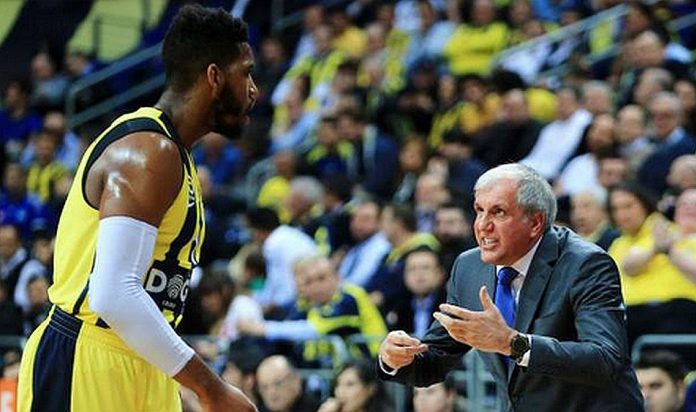
This summer I enjoyed dipping my toe in some EuroLeague film on Synergy. One of the reasons I enjoyed it so much was that it was almost brand new to me but had the World Championship feel. During those International tournaments, I am glued to the games. It is fascinating to see how different countries play and new trends that are emerging – the skill of the players and the quality of coaching is always amazing to me.
I had not seen much of any EuroLeague play and frankly didn’t (and still don’t really) know exactly how it all works, but after discovering access to some games on synergy – it’s like a mini version of the International tournaments that I love to watch.
From a rules standpoint, the EuroLeague and NBL are identical so I thought it may be worthwhile to post some trends I saw that may make their way to the NBL once games get going again.
I was working my way through the list of teams in the league during the quarantine season, admiring the skill of both the players and coaches when unfortunately I lost access.
Up to that point, I saw that the EuroLeague comprised of many different players, different coaches, from different countries but there were a few common alignments and starting movements that stood out to me. This post is aimed at consolidating those common starting actions to see how each team varies their plays to the strengths of their personnel – or to exploit how they are being guarded – by the end of the possession.
So, while this is an abbreviated view of an abbreviated list of the teams in the EuroLeague, I wanted to record some of the things I saw and share them with you – here goes…
Horns
With the ball in the middle of the floor and players spaced equally on both sides of the court, there are seemingly infinite options available to teams starting in a Horns alignment. It felt like every team had at least one Horns set and for many teams, it was the same action.
“Complicate the simple.” – Ben McCollum
A simple action can look the same from team to team. The skillset of the players in each position, and the order in which the actions take place, are the nuances that EuroLeague coaches consider to make the simple so complicated and so difficult to defend.
I saw 5 teams run what I would call ‘Horns X’. Fenerbahce and Barcelona wanted to use the X screen for a post up, Panathinaikos used the X screen to help free up a shooter, Anadolu Efes went to the next action so they could get to a high ball screen, and Olimpia Milano rejected the screen to leverage one of their shooting forwards.
All this from the same base set – many options based on who, where, when, and how.
Diamond
In line with the theme of this post, the EuroLeague teams I saw used a bunch of options out of a Diamond set. When it comes to building offensive packages, I love the idea of stacking actions on top of each other to flow into the next option or to use one as a decoy for another. I also love that families of actions can show themselves naturally by exploring counters for how the initial action is defended.
One of my favourite examples of this out of a Diamond is shown by Real Madrid when they go from their initial side pick and roll into a high step-up screen. If the point guard is denied, they effortlessly use the would-be-screener to allow the point guard to cut behind his defender an advantage. This ‘Blind-Pig’ action was a staple of the triangle offense that Phil Jackson ran with the Bulls and the Lakers.
Chin
Another alignment that multiple teams used was the four-out spacing that allows possessions to start with a Chin cut. It took me a while to distinguish the difference between this cut where the screen is set opposite the ball and a UCLA cut in which the screen is set on the ball-side (turns out that I would have labelled this video of the Celtics from 2016 as ‘Chin Series’ knowing what I know now).
Using this Chin cut was an effective way for EuroLeague teams to get their point guard into the paint as a screener or to quickly get into a ball screen with an aggressive wing. I really like the pressure the initial Chin cut puts on defenders that have to balance their positioning on the next action with the threat of a shooting point guard dancing back behind the screen for an open three.
As these common alignments began to show themselves (outside of all the different ball screen spacing options), it made me think about our league and how it can help with our preparation for opponents. Identifying common themes between the teams we play and then working toward defending those alignments will give us the greatest return on our investment of time. It also showed the value in teams knowing the strengths of their personnel and how subtle changes to a general theme can greatly impact individual and team performance.
Watching these players, coaches, and how the games are played was not only beneficial but a lot of fun. I am a little disappointed that I no longer have access to watching but when I have the opportunity to continue to explore more EuroLeague teams in the future, I will jump at the chance.
Thanks for taking the time to read, let me know what alignments are commonplace in your league and how each team exploits the strengths of their players accordingly.
Hope this adds some value.






